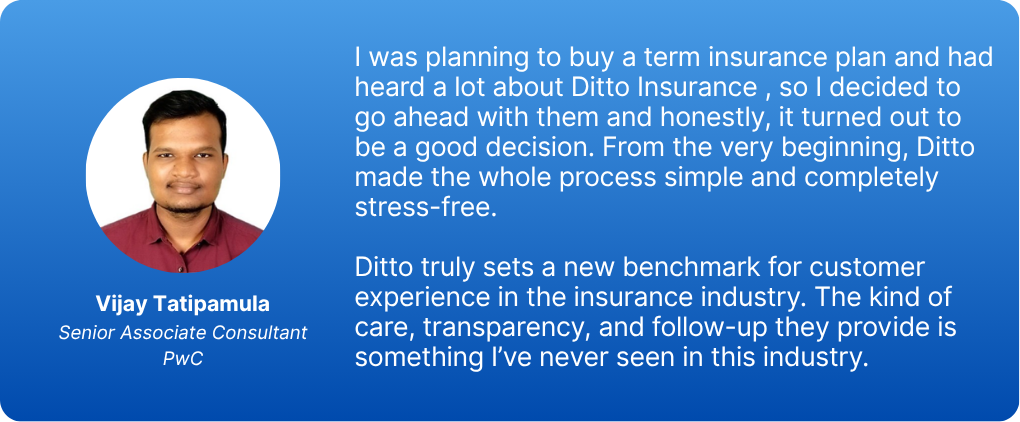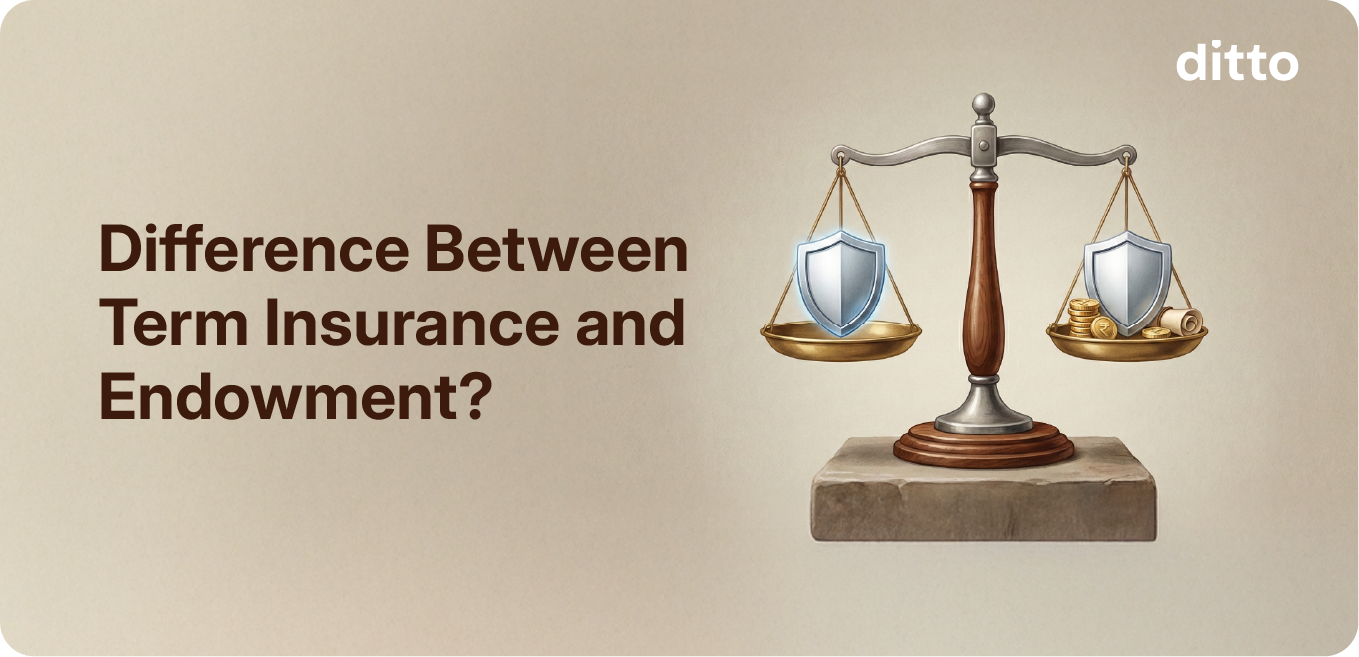Quick Overview
Choosing between a term plan and an endowment plan can be confusing when budgets and responsibilities compete for attention. The right choice depends on your life stage and priorities. This guide will help simplify the difference so you can decide with clarity and confidence.
How Do Term and Endowment Plans Work?
Before we understand the differences, it’s important to understand how term and endowment plans work.
- Click on this guide to learn more about how term plans work.
- Alternatively, read this guide on endowment plans to understand their functionalities.
Difference Between Term Insurance and Endowment Plan
How To Choose Between Term Insurance And Endowment Plan?
- Early in Your Career: A term plan offers high life cover at a low cost, so your family stays protected without straining your income.
Term Plan Premiums Across Ages
Note: The listed premiums are for a non-smoker profile, male with a sum assured of ₹ 2 crore (Coverage till age 70, without first year discounts). Premiums can vary widely based on smoking habits, BMI and medical history, occupation, policy term, and the insurer’s underwriting rules.
- Looking to Save with Insurance: Endowment plans combine savings and cover, but cost more, lock your money for years, and usually give low returns.
- Married or Have Kids: A term plan provides strong financial protection for your spouse and children if something happens to you.
Strategies to Make the Right Choice
Ditto’s Take on a Balanced Approach
The smarter strategy is to separate insurance and investments. Buy a pure term plan for strong life cover at a low cost, and invest your savings in options that can grow faster over time. This protects your family and builds wealth at the same time.
Instead of a low-return bundled plan, buy a high-cover term plan. Invest the remaining amount in SIPs, PPF, or NPS based on your goals. Over 15–20 years, this approach can create a much larger corpus.
One should consider endowments only if they are not eligible for a term plan due to medical or income eligibility reasons. However, if the primary goal is maximum life protection per rupee, term insurance wins almost every time.
Why Choose Ditto for Term Insurance?
At Ditto, we’ve assisted over 8,00,000 customers with choosing the right insurance policy. Why do customers like Vijay below love us:

- No-Spam & No Salesmen
- Rated 4.9/5 on Google Reviews by 15,000+ happy customers
- Backed by Zerodha
- Dedicated Claim Support Team
- 100% Free Consultation
You can book a FREE consultation. Slots are running out, so make sure you book a call now!
Final Thoughts
Endowment plans like Axis Max SWP and HDFC Life Sanchay Plus are niche products. They mix life insurance with guaranteed savings, but come with clear trade-offs: higher premiums and much lower life cover when compared to pure term insurance plans.
If you are looking for a term plan from insurers with established track records and affordable riders, we recommend comprehensive plans, which align with your long-term goals. Explore more about how our experts evaluate term plans through Ditto’s cut.
Frequently Asked Questions
Last updated on:










